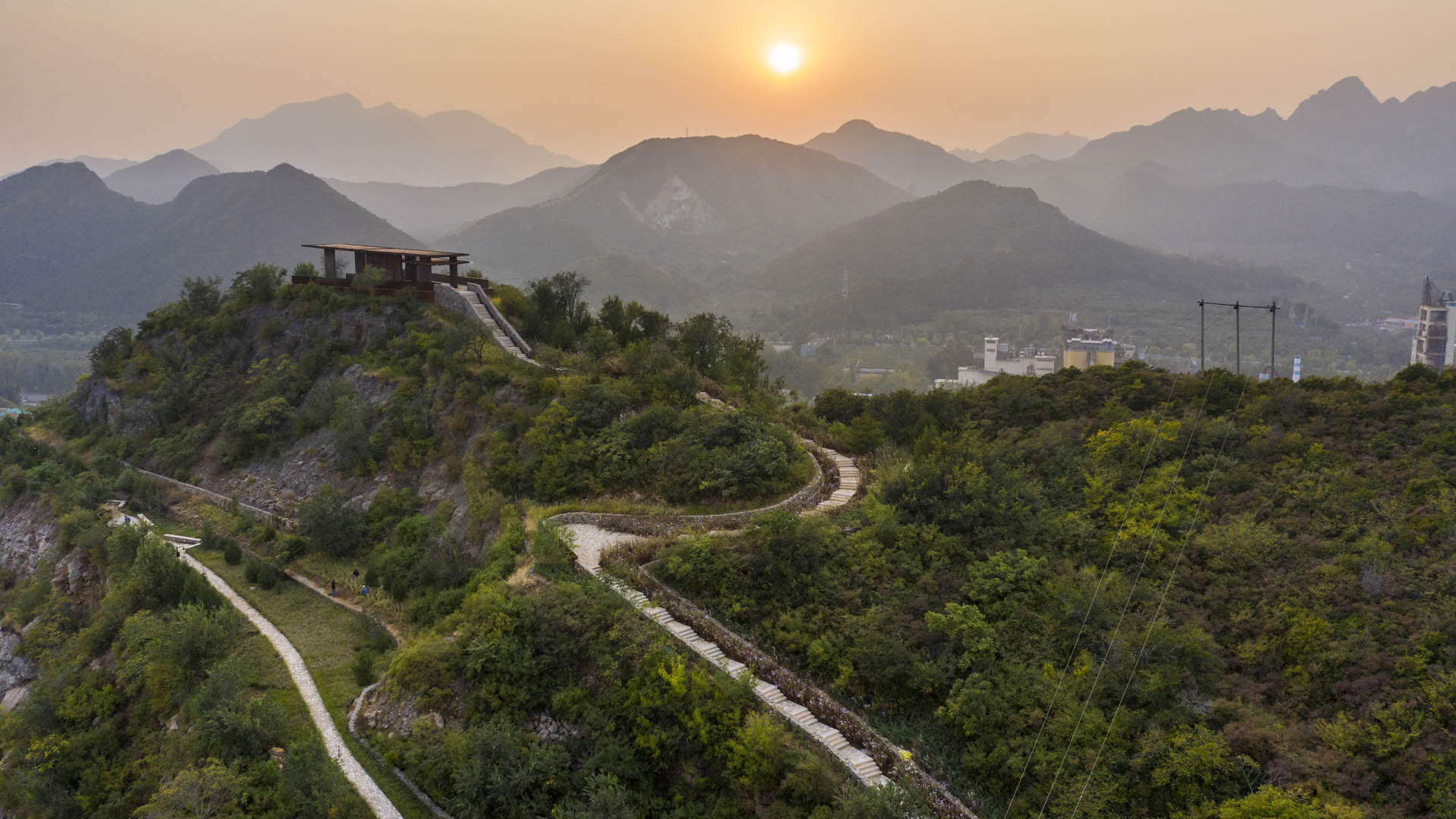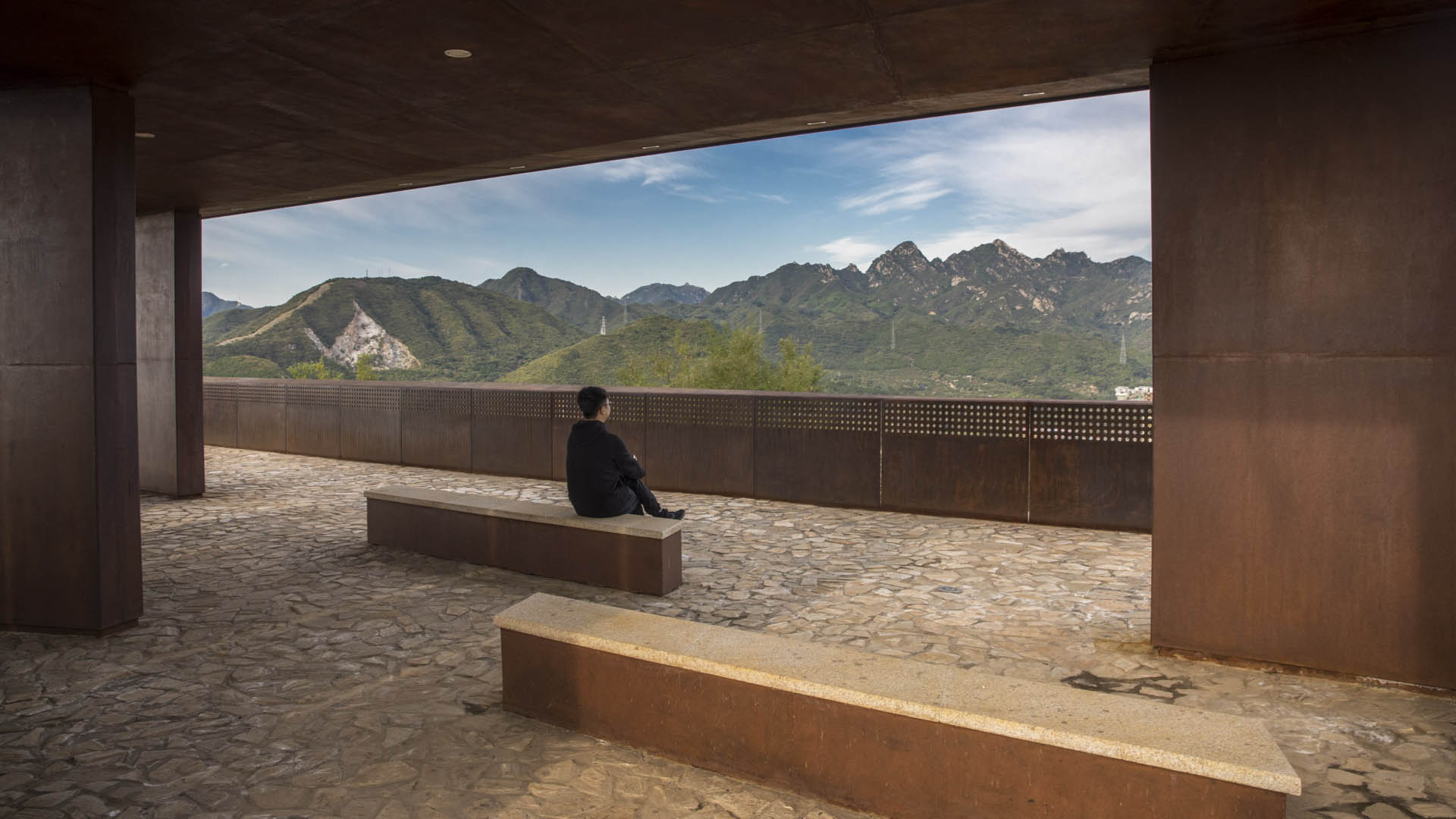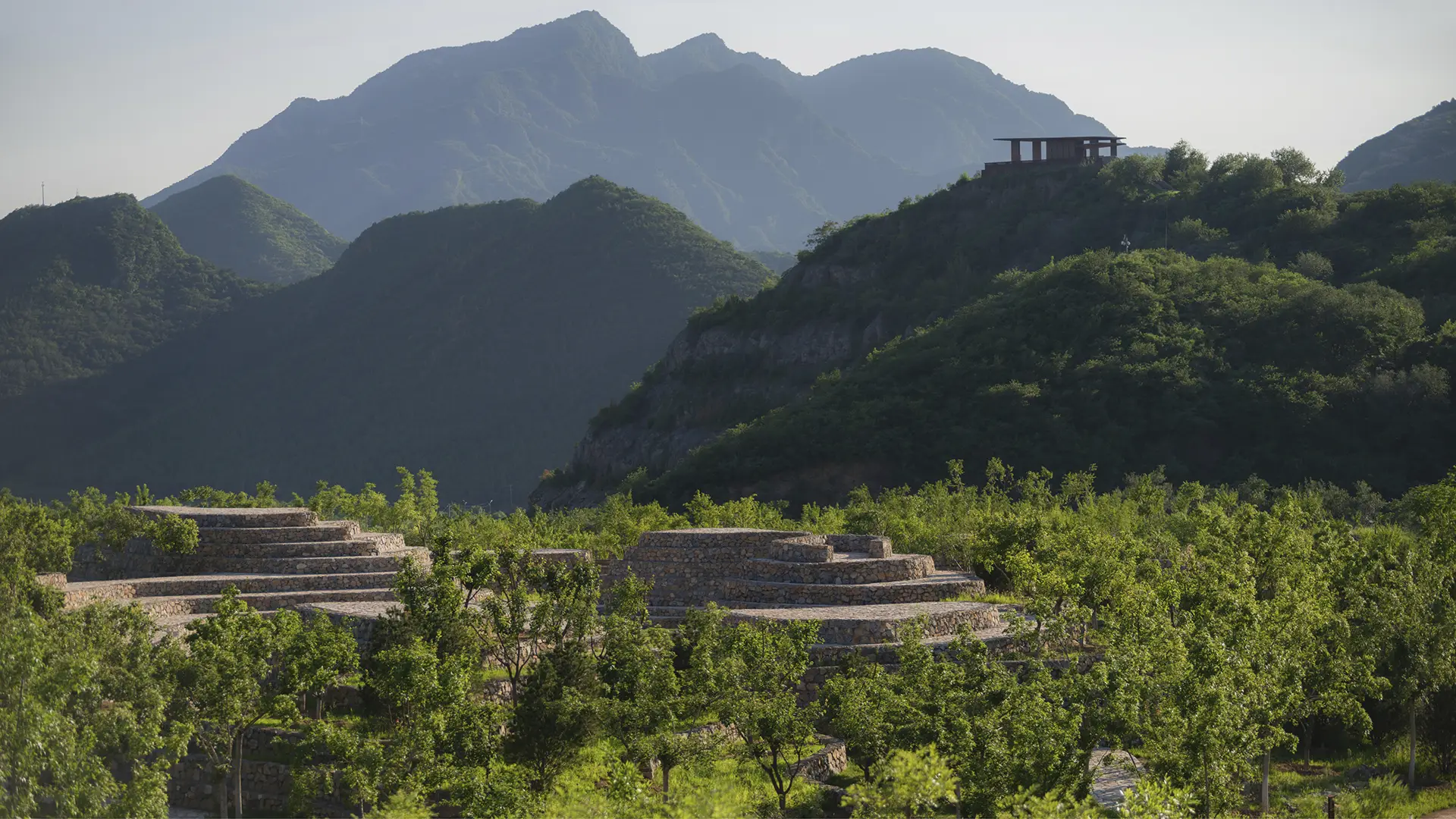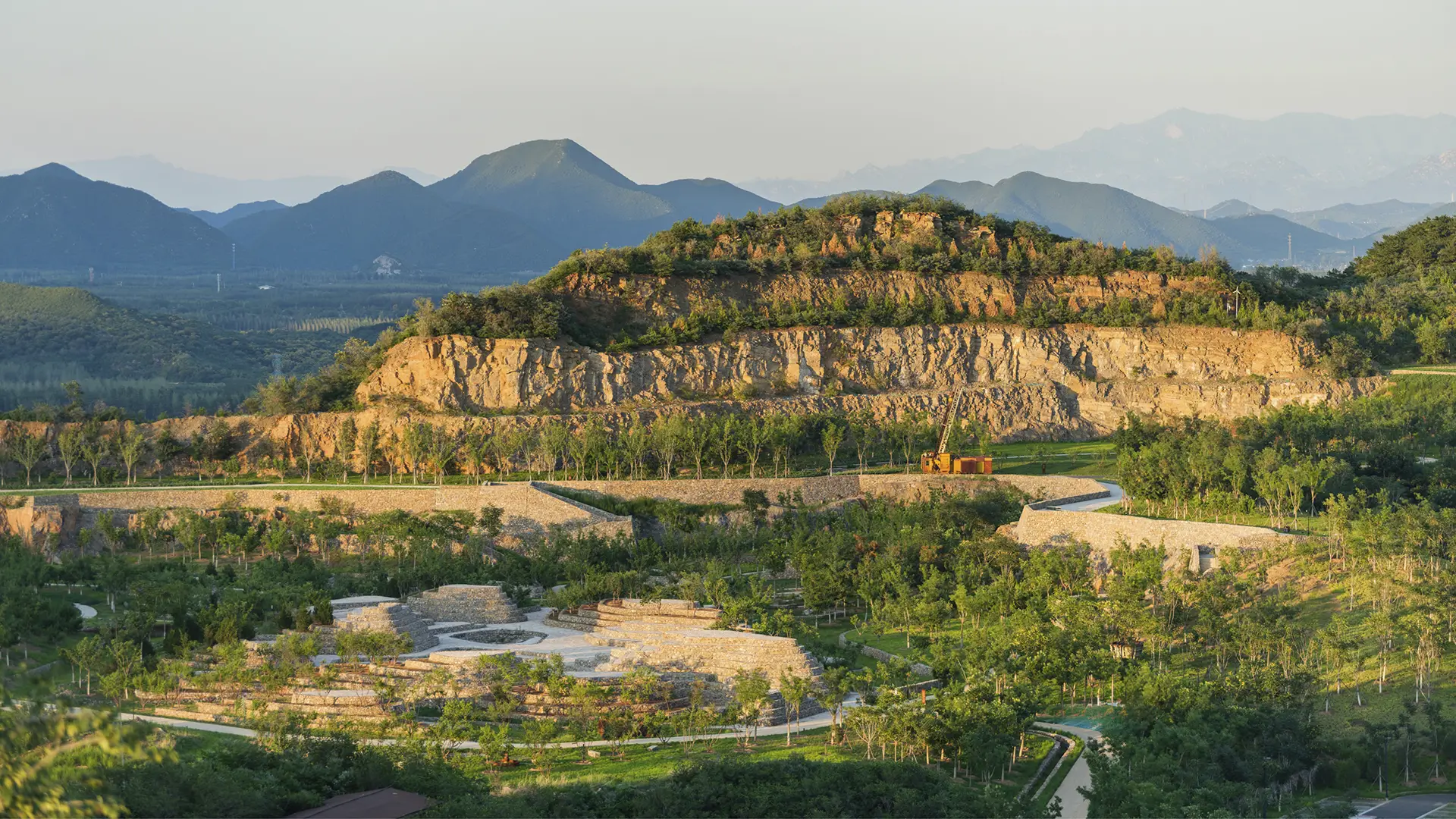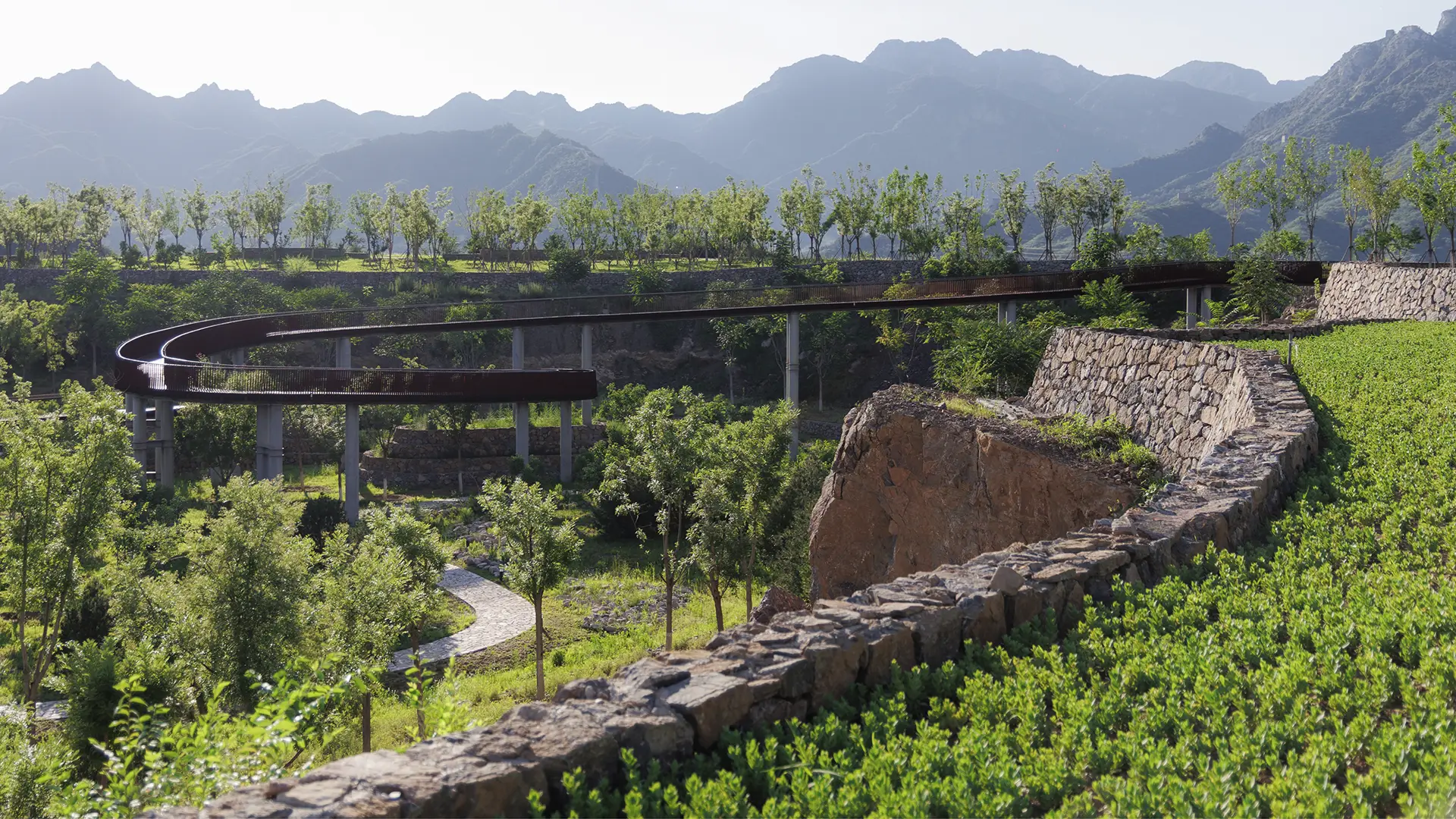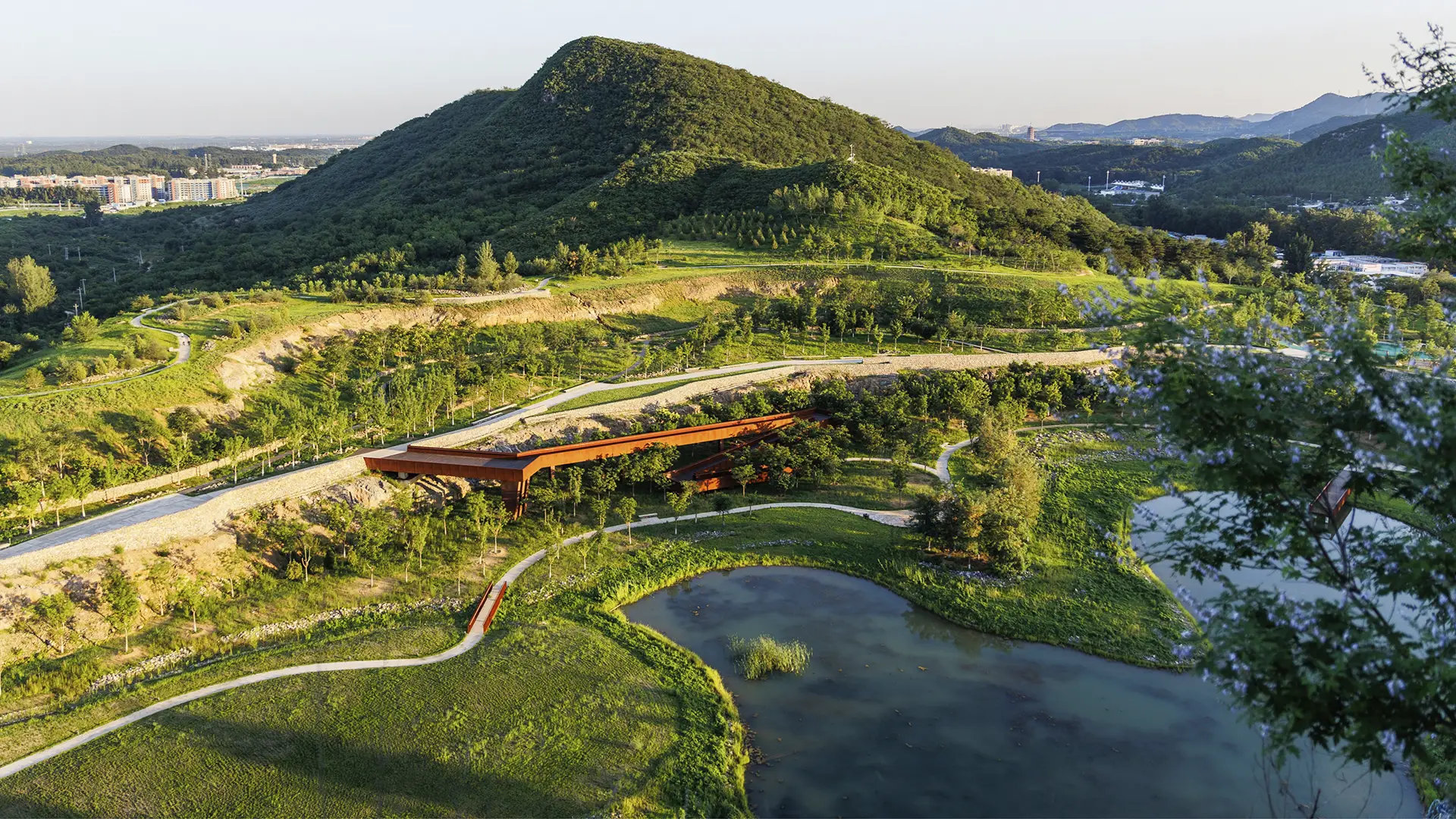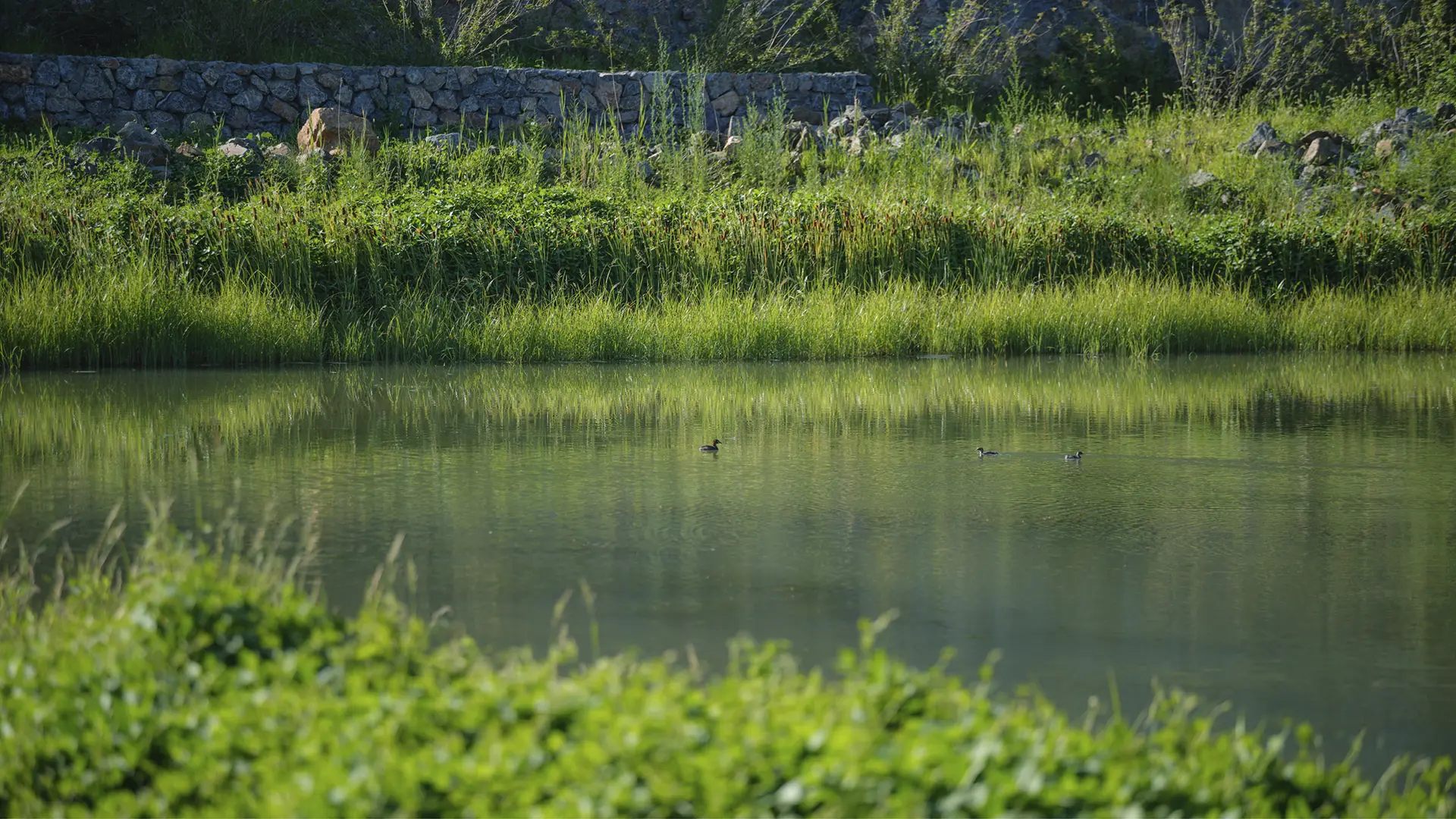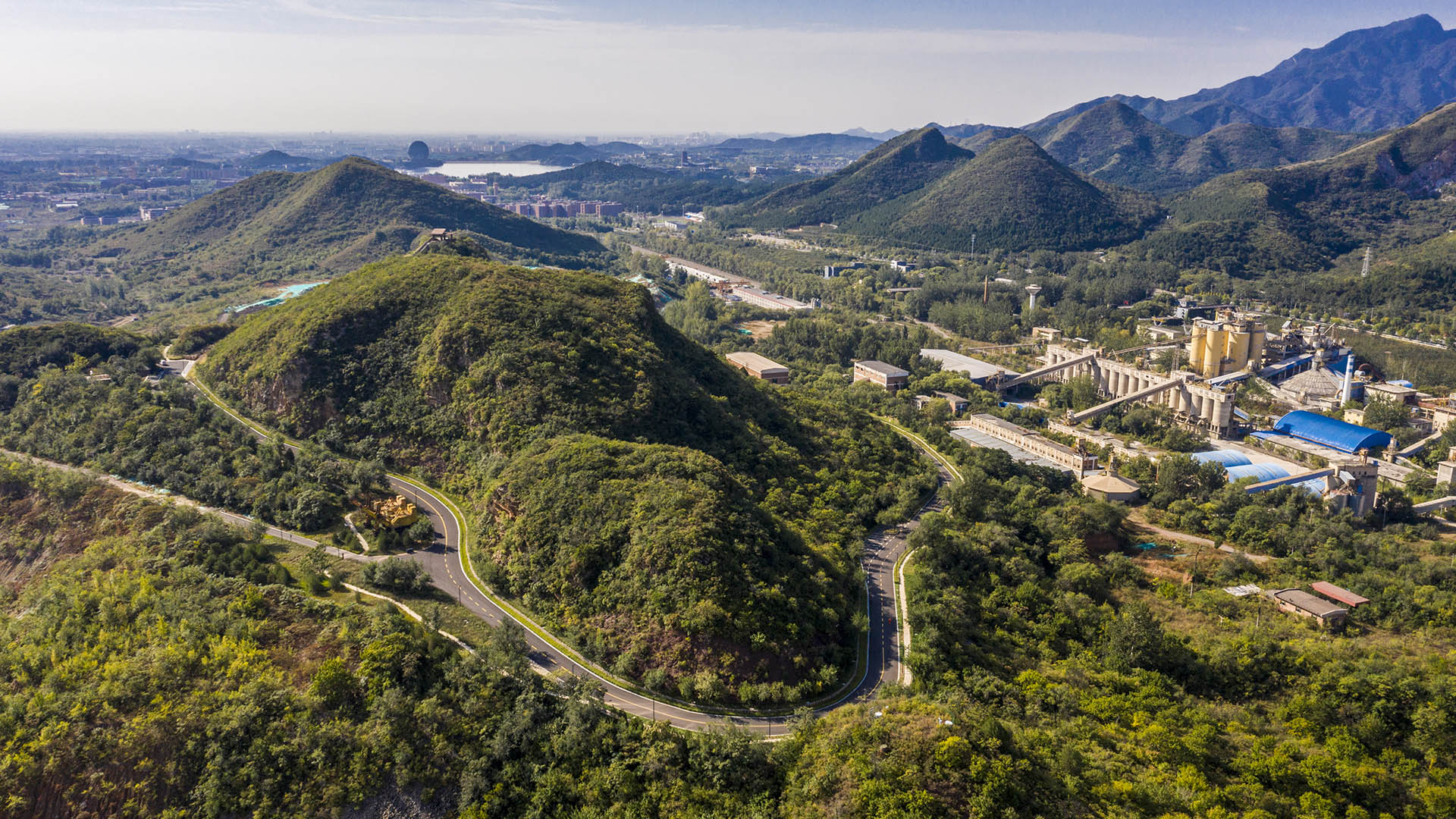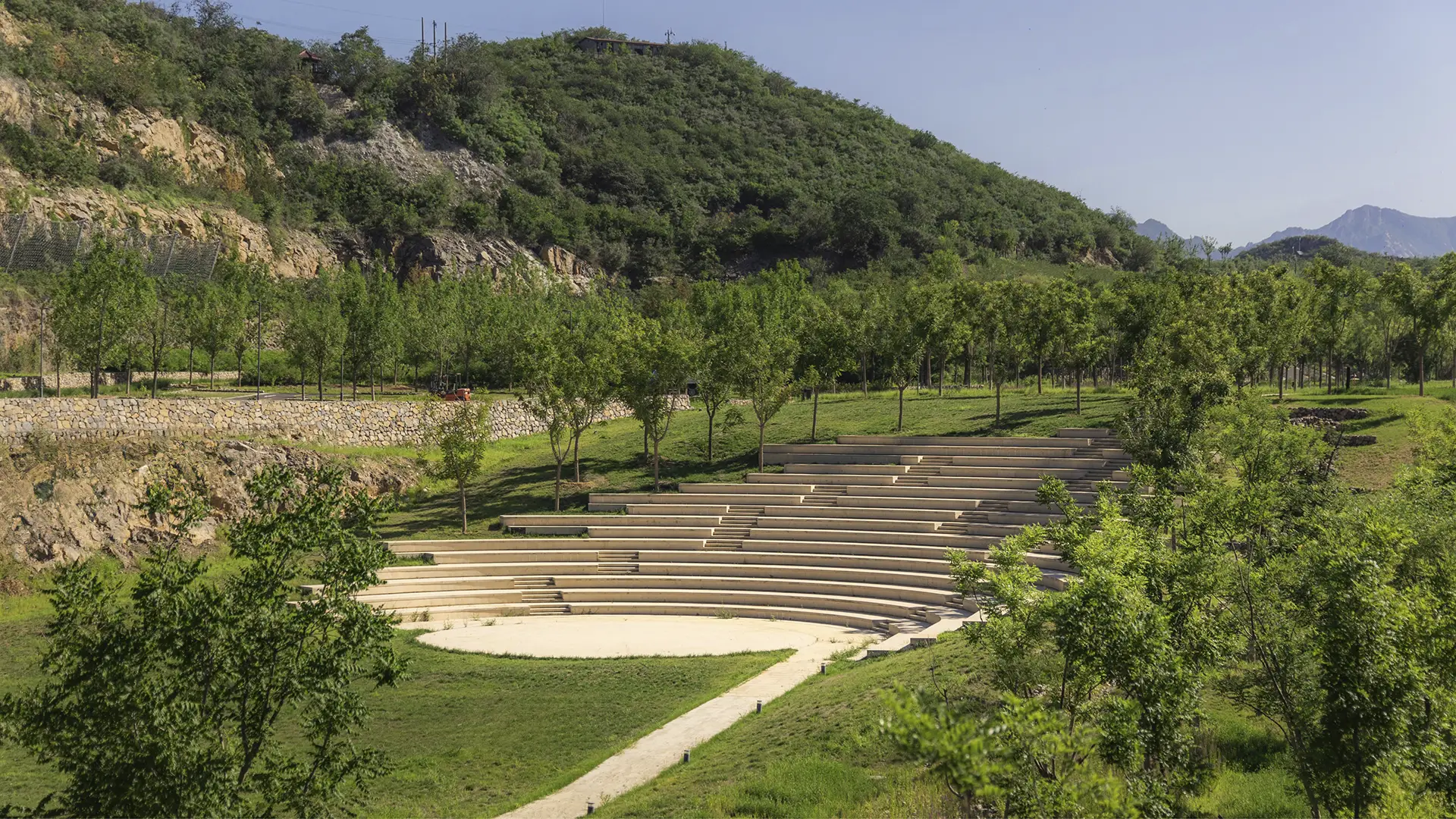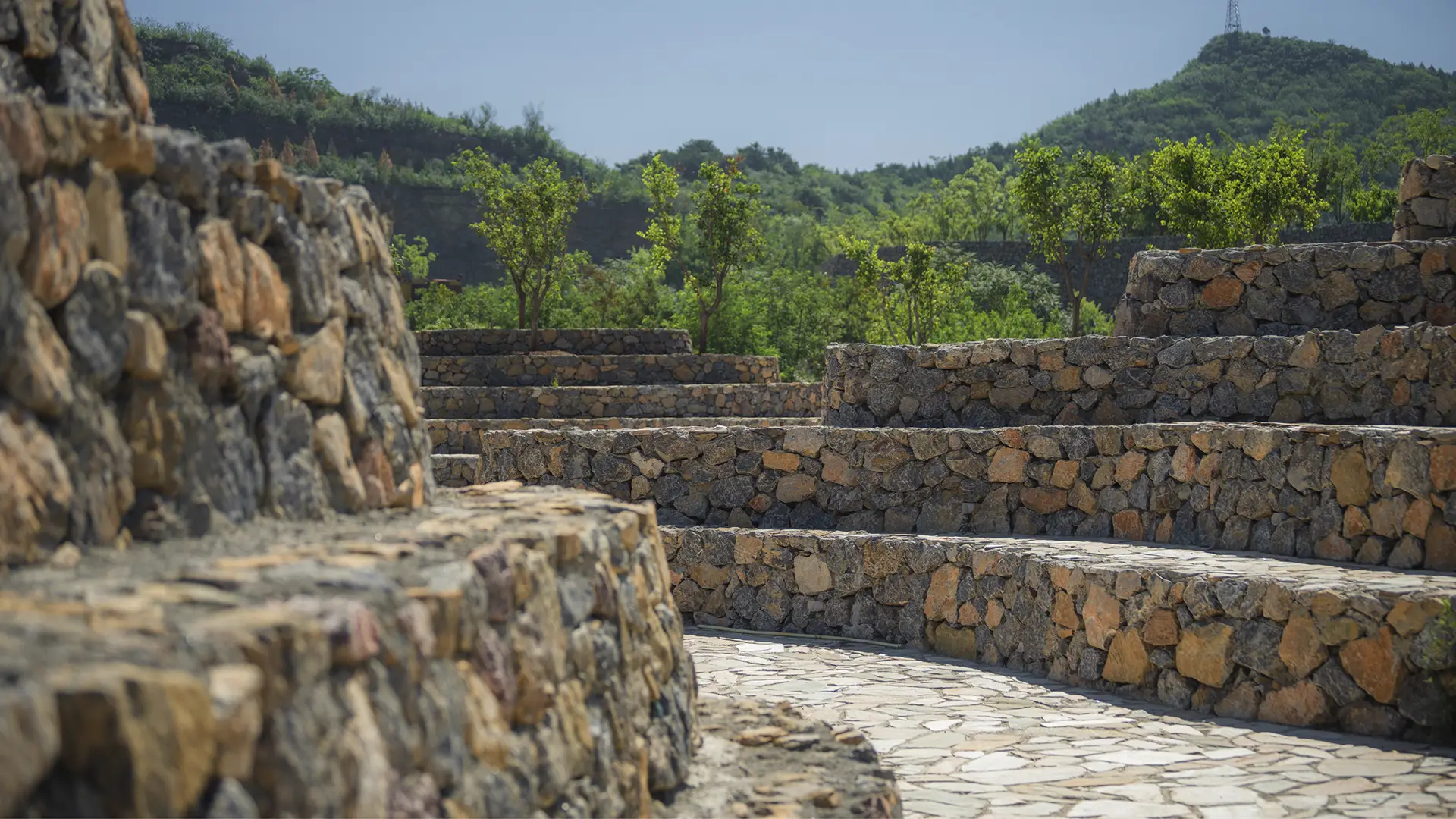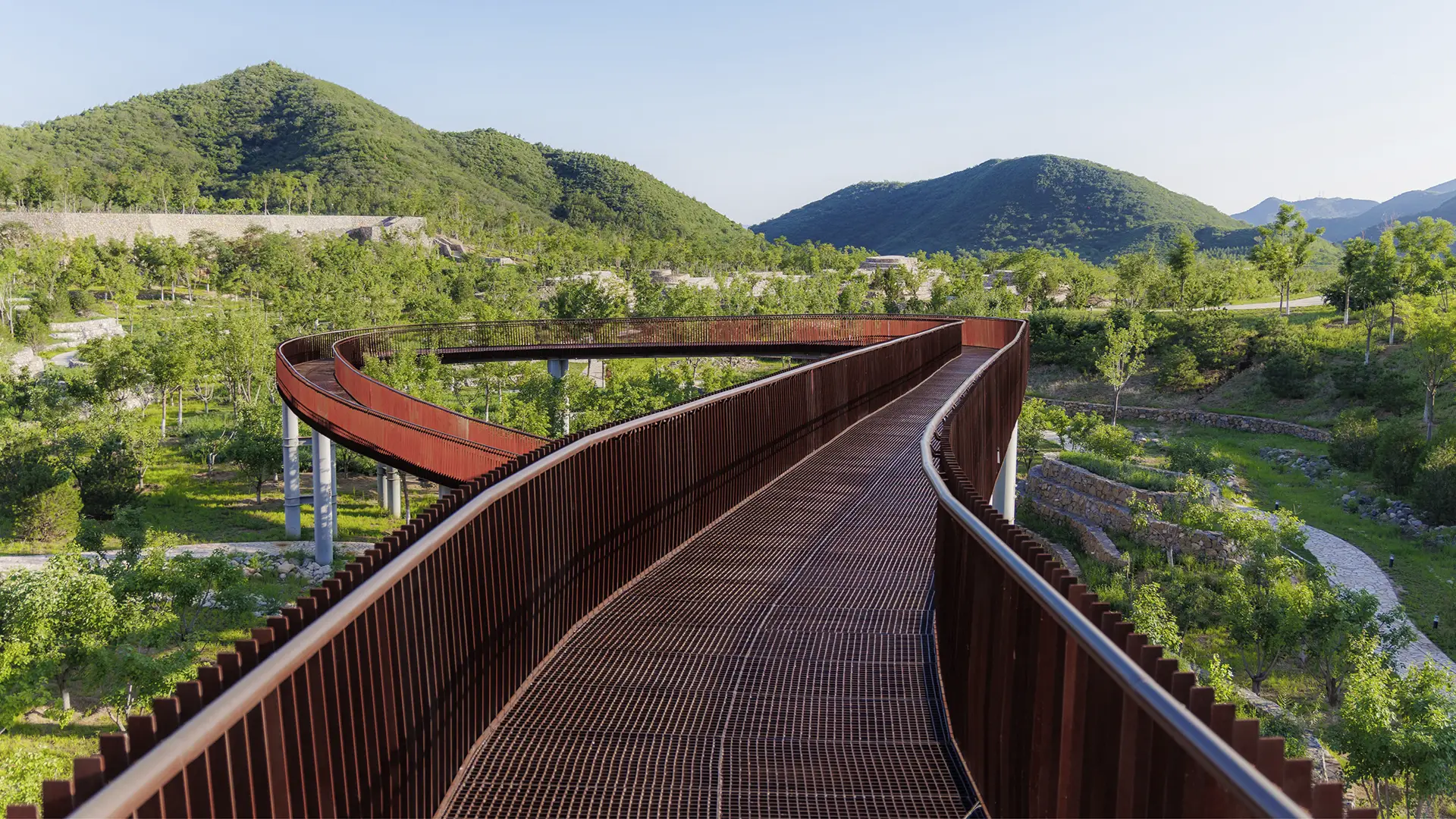Just north of Beijing, between the Great Wall and Yanqi Lake, the Xingfa Cement Plant once fueled China’s construction boom, operating for over two decades before its 2015 closure under the National Air Quality Action Plan. Today, an adjacent quarry that once provided raw materials has been remediated as a 107.5-hectare terraced park that anchors an accompanying 17-acre research campus on the site of the plant.
Where a single willow tree once stood, the valley now supports a vast, layered network of emergent plant communities selected to adapt in rocky, alkaline soils. Native arborvitae stabilize slopes and retain moisture through summer droughts. Legume-producing species enrich the thin soil, while seasonal stands of smoke tree, mulberry, and elm provide canopy and seasonal color. Invasive plants introduced during the site’s industrial era have been cleared and replaced with species that restore soil conditions. On the southwestern end of the site, a seasonal pond has been added to retain stormwater runoff and reduce erosion across the exposed quarry floor.
Paving, walls, and trail edging were constructed using recycled stone and shale. Salvaged conveyor housings and other industrial remnants were embedded into the landscape along the “Trail of Memory,” a pedestrian spine linking the two quarry pits that pays homage to the site’s industrial past. Climbing up a nearby hilltop to an overlook pavilion, a 1.2-kilometer hiking trail provides panoramic views of the surrounding Yan Mountains.
China Beach
China Beach acts as an amphitheater to take in the drama of the San Francisco Golden Gate: the ebb and flow of the wildlife, currents, tides, winds, fog, sun, surf, and marine traffic. Ultimately, this larger landscape and the landscape features of a refreshed beach terrace will be the defining experience for the visitor to China Beach. We are striving to prod...
Longgang River Blueway System
The Shenzhen Longgang River Blueway System is envisioned to unlock the tremendous land value of this 13-mile-long suburban watershed and galvanize the city’s future growth. SWA’s proposal addresses urbanization issues pertaining to water, the environment, and open space shortage, while also activating industrial and cultural revitalization in the surrounding d...
Palisades Park
Santa Monica’s famous pier area draws visitors who often disregard pavement boundaries and compact the landscape soil. Palisades Park, adjacent to the iconic pier, is a particularly active site for cyclists and tourists that has long been in need of a planting strategy to discourage pedestrian overflow into the landscape. SWA’s defensive planting strategy tack...
Eucalyptus Society Garden
SWA’s design for this park, with its collegiate social atmosphere, offers a memorable place of natural respite that functions as green infrastructure.
Eucalyptus Society Garden project is located at the intersection of three science and innovation corridor axes in Guangzhou International Innovation City, including the core axis of the University City. B...


